Essential Phone review: One (big) step away from the flagship competition

It's pretty rare nowadays to see a brand new smartphone company launch from scratch, and it's rarer still that it chooses to launch right into the ultra-competitive high-end smartphone space. The final piece forming this triumvirate of rarity is actually shipping a product — something that Essential has actually done. Sure hundreds of millions of dollars in venture capital helps, as does the leadership of one of the founders of Android, but this is still no small feat.
And despite being its first ever product, the Essential Phone isn't some sort of short-sighted or incomplete gimmick. It's the real deal, with proper specs, serious hardware, and desirable stock software. After a brief hiccup with its shipping timeline, Essential has a full e-commerce launch, as well as a retail partnership with Best Buy and carrier partnerships with Sprint and Telus. Yup, it's done things properly and actually started off its life on the right track.
But with all of the launch hurdles out of the way, we now have to actually evaluate the phone itself. In a world where the top-end Galaxy S8, LG G6, and HTC U11 (not to mention a whole field of less-expensive phones like the OnePlus 5) exist, where does the Essential Phone stand out? We cover it all here in our complete review.
About this review: Updated August 29
We always desire to use a phone for an extended period of time before writing a review, but given the circumstances of receiving the Essential Phone, in this case this review was initially published the morning of August 18 after roughly 52 hours with the phone.
As indicated at the time, the intention was to update this review with additional information later on after spending more time with it. That is now how the review stands, with our final conclusions on the Essential Phone after 12 days of use.
Since receiving the Essential Phone, its software was updated three times, and it was used on both T-Mobile and AT&T over the course of the review in San Jose, CA, Seattle, WA, and New York, NY. The phone was provided to Android Central for review by Essential.
Be an expert in 5 minutes
Get the latest news from Android Central, your trusted companion in the world of Android
Condensed version
Essential Phone Hands-on video
For the abbreviated, visual take on the new Essential phone, be sure to check out our hands-on video above. Once you're done and ready to see all of the details, read through the review below!
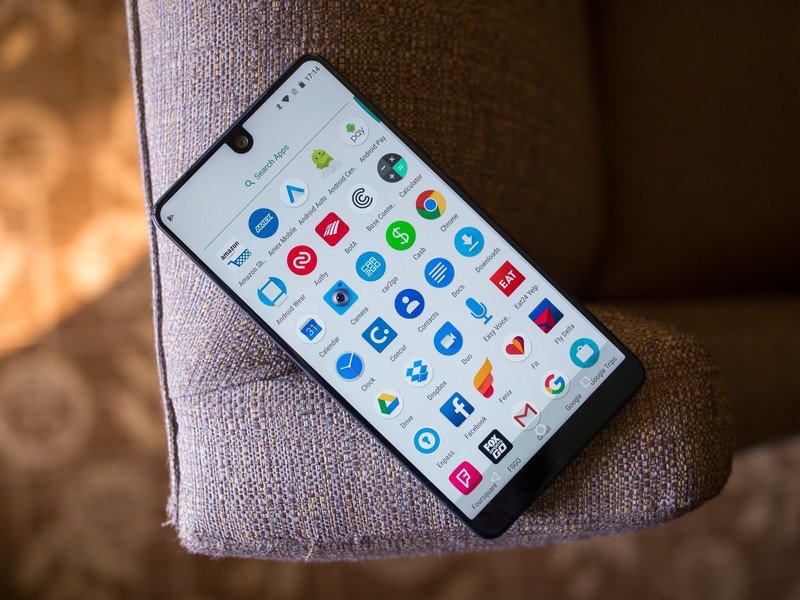
Just the essentials
Essential Phone Hardware and design
From the very start, Essential has focused on simplicity, minimalism and generally striking design to sell the Essential Phone. It's right in the name: just the essential parts, and nothing more. It's something CEO Andy Rubin espoused constantly — he has no desire for the phone to even have the company's name on it (something he calls "Nascar branding"), let alone any other superfluous design elements that don't add to the function of the device.


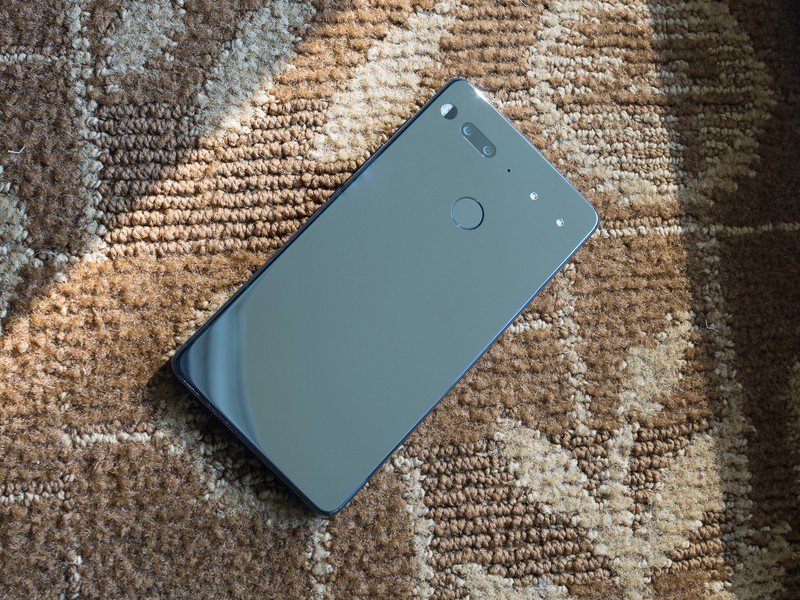
In taking a two-hour tour of the Playground Global headquarters (the incubator from which Essential was born) and talking to the engineers who had their hands on this product, I found there was another pillar to the Essential Phone's construction: obsessive quality and materials standards. Talking to a hardware engineer standing in front of a massive titanium 3D printing machine, we talked about the tolerances and tooling required to choose materials like titanium and ceramic rather than traditional aluminum and glass.

The materials are tougher to work with, requiring different processes and tooling that has to be replaced 50% more often, but the trade off is worth it in their eyes. Titanium doesn't bend as easily as aluminum, and when it does bend on impact it simply springs back into place without permanent structural damage. Ceramic is stronger than glass, resisting scratches even better, and it just feels nicer as well. The extremely tiny bezels around the screen, which give the Essential Phone its distinctive look, require a tolerance of just 0.1 mm on the display panel edges; other manufacturers typically accept a 0.4 mm tolerance.
At 185 grams (6.53 ounces), the Essential Phone is hefty — befitting of its monolithic structure. It feels fantastic when you pick it up, and if you're a fan of minimalism as I am you'll love the look as well. The ceramic back flows smoothly to the highly polished titanium sides, which carries right into the Gorilla Glass 5 front. Essential is making no claims of ruggedness here, but you just get the feeling that it's a phone capable of living — and holding up admirably — a year or two outside of a case. You certainly don't get that from a Galaxy S8.
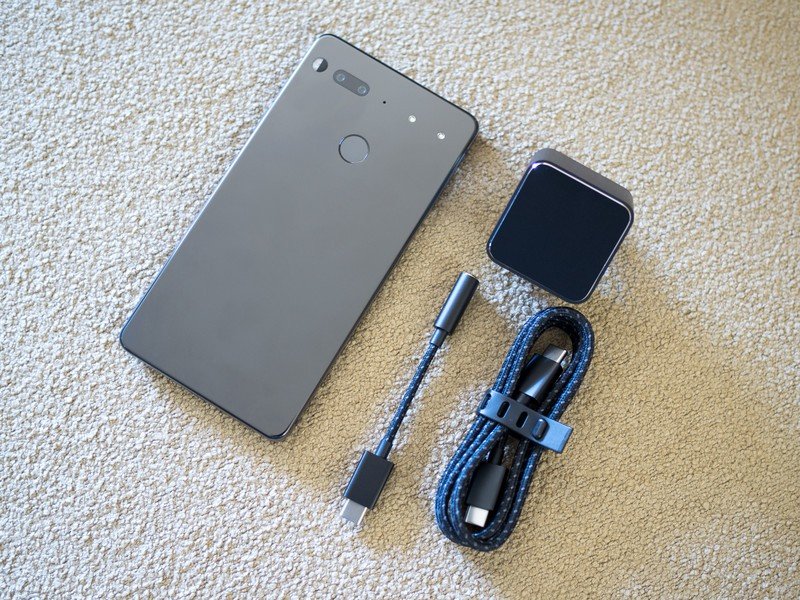
Being able to use more exotic materials with extra-high quality standards on the Essential Phone is one of the benefits of being small, the team says — if it had to make 40 million phones this year, these materials and processes just wouldn't be available. A majority of the Essential product team had a past life that involved a stint with Apple, and this experience is certainly in stark contrast to that company's product development. It's Essential's nimble size that's one of the reasons it can offer this bonkers-looking display, as the competition like Samsung and LG (and Apple, as rumored) move in that direction but haven't yet reached this tiny bezel size.
It's all about that dat screen.
The front-on view is indeed startling for the first day or so you use the Essential Phone. Yes there is a bezel on the bottom of the phone, but you're not looking down here — you pay attention to the ridiculously small bezels on the other three edges. Well, that's not quite right; you actually just forget about the bezels entirely, and truly feel like you're only holding a screen. That is, of course, until you see that front-facing camera dipping down into the status bar.
The display itself, once you get over the mind-bending nature of the bezels and curves, is a run-of-the-mill high-end LCD. At 5.7 inches diagonally and a 2560x1312 resolution (505 ppi) it's right in line with the rest of the industry. It's clear, crisp and has excellent viewing angles — but at roughly 500 nits max brightness it falls short of the competition in direct sunlight. Part of that is due to the inherent reflectivity of an LCD panel, but the Essential Phone also doesn't have any sort of outdoor display mode like the Galaxy S8, LG G6, U11 or Xperia XZ Premium, which pushes those phones over 550 or even 600 nits in harsh sun situations.

Bare-bones
Essential Phone Software and performance
It doesn't take long to get a handle on the Essential Phone's software, provided you've used another phone with a "stock" implementation of Android Nougat like a Pixel, Nexus, Motorola or OnePlus phone. This is precisely Essential's goal, as Rubin reiterated time and time again — it has no desire to add any extra software, services, apps or changes. And if you want something extra, you're going to find it in the Play Store. Even in a world where you can choose from the aforementioned phones and get a very similar experience, it's still refreshing to see a new company release a phone and go with this stock software approach from the start.






When you start up the phone, you have a basically clean slate. The app drawer is only half full, with "as few apps as possible" pre-loaded. Unless it's an app to perform one of the phone's basic functions or it's an app mandated by Google to be included, it isn't here. Even the phones sold by Sprint and Telus will be bloat-free (though they will be SIM-locked if bought on a financing plan).
The Essential Phone's software is aggressively bare almost to a fault. Essential has made practically zero changes to the stock Android interface, and while that means there's no opportunity for the company to mess things up it also means it isn't differentiated in any way. I look at the way OnePlus and Motorola (and even Google on the Pixels) do their software, with subtle and very useful additions that improve the experience without getting in the way, and think Essential is maybe missing an opportunity to offer just that little sprinkle of extra functionality that would be super useful. This truly is the closest thing you can get to "stock" Android, for better or worse.
The only real change, if you could call it that, is adding some extra height to the status bar to ensure there are no conflicts with the odd front-facing camera jutting down into the screen. The bar is much taller than other phones, which feels a little odd at first but is really no different than simply having a larger bezel up there in the first place. Because the Essential Phone also has an extra-tall display, it has to fight with some app compatibility issues just like the Galaxy S8 and LG G6. Most apps are properly designed to scale to a tall screen and fit more seamlessly into the tall proportions, but others aren't ready for the aspect ratio and add an extra bit of dead space at the top of the app. Unlike the GS8 and G6, the Essential Phone has no "compatibility mode" of any sort to gracefully stretch or letterbox these apps — you just get dead space at the top.
The spartan software shouldn't come as any surprise considering the size of the Essential team.
None of this should be surprising. When the Essential Phone was announced, the entire company consisted of 20 people — hardware, software, business development … everything. Even today, a few months on from launching the company, Essential's headcount hovers around the 100 mark, and they're responsible not just for the Phone but also the 360-degree camera attachment, upcoming Essential Home and future products. It's no surprise that the extra engineering hours just aren't available to make more elaborate software.
Even with the small staff, Essential is talking a strong game when it comes to releasing monthly security patches and regular platform updates. If the company is able to keep up the cadence of updates, we may be more likely to look past the few areas of the software hat could use a bit more attention and polish.

Performance and specs
In my time talking to Essential engineers and representatives, nobody seemed interested in boasting about specs or speeds. Not because the phone doesn't have high-end specs, but they simply understand that the Essential Phone has effectively the same spec sheet as every other top-end phone in 2017 and it's no longer a point of differentiation. Things like true world LTE radio support (25 bands) from a single model and 128GB of built-in storage are just givens in Essential's eyes, because that's what people want in their top-dollar phone.
Two specs that aren't included, however, are a waterproofing IP rating or a 3.5 mm headphone jack — features many people would consider "essential" when dropping $700 on a new phone.
More: Complete Essential Phone specs
Essential isn't boasting about specs — it's just matching the rest of the industry.
With a Snapdragon 835 processor, 4GB of RAM and bare-bones software, performance on the Essential Phone is expectedly great just like every other phone in this segment. I zipped through apps just fine and didn't find any hang-ups throughout — though I did have a couple surprising instances where the phone completely locked up for several seconds, once requiring a force reboot. (All of them seemed to stem from using the camera, which you'll learn more about below.)
With that simple, stock-like software, the Essential Phone gets really good battery life out of what is just an average-sized 3040mAh capacity. I never ended a day with less than 25% battery remaining, which I can't say for the other flagships out there today — even those with larger battery capacities. Even on really tough travel days, which typically involve 4 to 5 hours of screen-on time, tons of data use and Bluetooth music playback, I could make it 10 or 12 hours before needing to charge. I don't think Essential is necessarily doing a ton of battery optimization here, but the super-simple software just isn't doing anything egregious to drain the battery.

A good start
Essential Phone Cameras
The best example of the Essential Phone's bare-bones software experience is in the camera, where it comes across as a "programmer's first camera app" type of interface. You can toggle HDR (but not auto HDR), the flash, video quality, timer and front-facing camera, as well as switch between auto, black-and-white, and slo mo mode. That's it. The "settings" page simply gives you options to toggle shutter sounds and location. There's no viewfinder grid option, no filters, no clever zoom mechanism, no depth effects from the dual cameras ... there isn't much of anything beyond the basics.
The camera app doesn't even lock the screen awake when it's open, so after 30 seconds without interaction (by default) the screen simply turns off. There are other annoying quirks like the flash turning back to auto mode any time you toggle HDR. It has decent performance, but it isn't lightning quick like the rest of the software experience — and if you push it too hard, it's likely to stutter and freeze. These characteristics don't seem to have improved much with the three camera-focused updates the phone received during the review period, either.

The Essential Phone is working with dual 13MP camera sensors, one color and one monochrome, with f/1.85 lenses and dual-mode (laser and phase detect) auto focus. You don't get OIS (optical image stabilization) on either camera, nor does the pair offer any sort of dual-camera selective focus or artificial bokeh effects — though they're apparently on the way. The monochrome sensor can be used for true black-and-white shots, which look good, but its main purpose is to (theoretically) bring in extra light information to assist the main camera in getting better shots — much like other "color + mono" camera setups do.











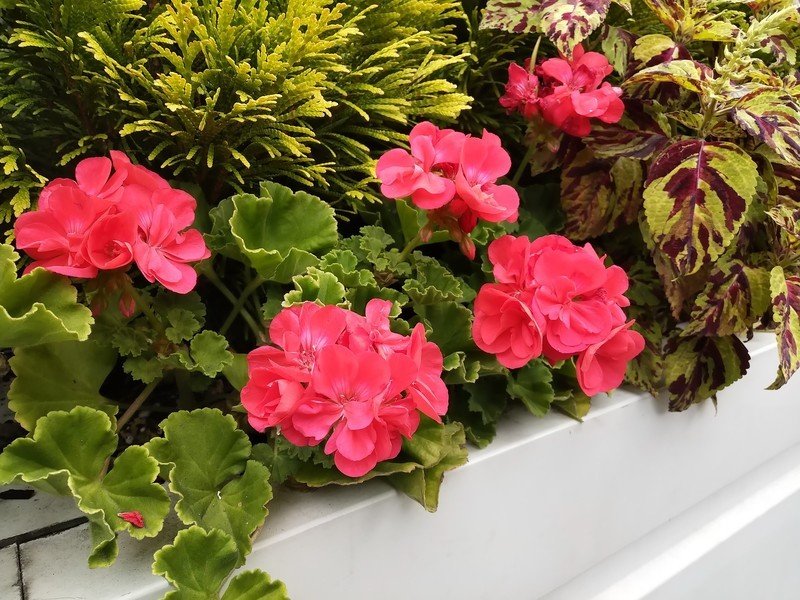









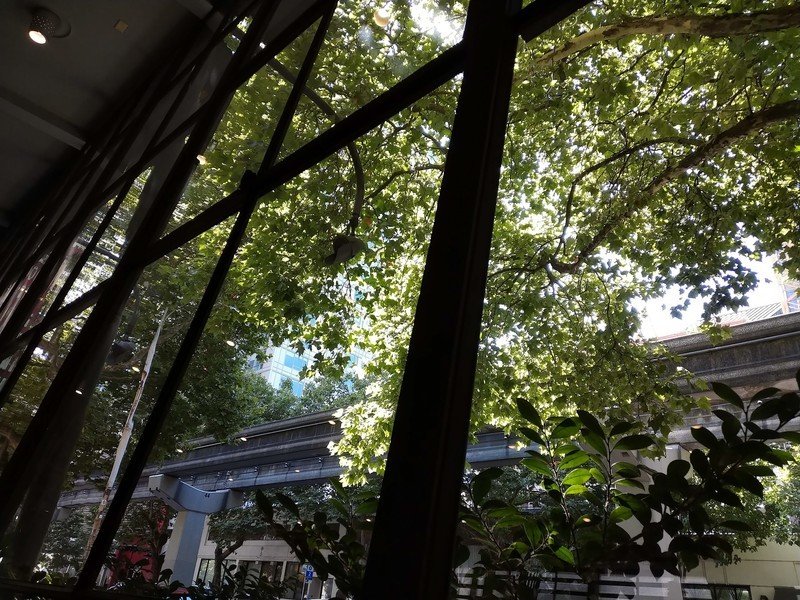
Photos are particularly sharp and detailed with just the right amount of processing in fine lines — something so many cameras do wrong. But colors don't necessarily pop or wow you as much as the competition; they're just a bit dull. Dynamic range is acceptable, but sometimes a tap-to-meter was needed. And the HDR mode, which was added after receiving the phone, doesn't seem to actually do much other than slow down the capture process. Even HDR shots were still in the dull range when compared to standard photos from other flagships — and when you compare HDR to HDR between the two, it isn't even a competition.
This is great for a first-ever phone, but the camera app needs work.
Where things drop off quickly is in low light. Typical mixed lighting situations are manageable and remain crisp, but when things get properly dark the Essential Phone's camera just can't handle it. Shutter speeds drop to about 1/15 of a second, then the ISO starts to crank up until you get a noisy mess. It's in these situations where you _really miss having OIS, or at the very least appreciate the amazing software processing that phones like the Google Pixel have.
Even without OIS, it's clear the Essential Phone's camera components have room to grow with software. You can take some good photos with it, and what I see in some of the shots I've taken is a whole lot of potential just waiting to be leveraged.
But right now, even with a few camera-focused updates applied in the last week, the camera software is just so far away from where it needs to be that it makes me skeptical that a massive improvement is forthcoming. Software can and will be improved over time — the question is how long you'll have to wait and deal with a slow, unresponsive, lackluster camera before Essential gets it up to speed. And only then, once Essential has reached the bare minimum requirement of a fast and smooth camera app, can we talk about actual photo quality.
I just wish that Essential had shipped this phone with a camera experience that showed the same attention to detail and expertise that it clearly applied to the hardware. When your $700 phone's camera is handily beat in performance by a $200 budget phone, you did something wrong.

Waiting for the other shoe to drop
Essential Phone Bottom line
A recurring theme of my tour of Playground Global was a frank sense of realism about the whole Essential Phone launch. Essential has a clear goal: make a clean, bother-free, high-end phone that's user-centric, and make money off of the margins selling the hardware. It isn't interested in designing a custom software experience or building ecosystem lock-in with extra services and subscriptions that make you feel like the product rather than the customer.
The Essential Phone's hardware is simply stunning, there's no way around it. Titanium and ceramic are both beautiful and brawny, while its tiny bezels are just downright amazing to experience. You get all of the specs you need — minus waterproofing and a headphone jack — plus great additions like true worldwide network support and 128GB of storage. Performance and battery life are in line with its $699 price. It isn't all industry leading, though, with a display that has good-not-great brightness and cameras that land well short of the flagship competition with no guaranteed path of improvement.
The value proposition isn't about what it has, but what Essential has chosen to omit.
It also has a bit of an aura around it that feels as though it's waiting for the other shoe to drop to make it a complete product. Despite having ambitions of future artificial intelligence-driven software, there is absolutely nothing in Essential's current build of Android 7.1.1 that shows any unique software prowess or even a tiny bit of thoughtful customization for a better experience. The same goes for its rear-mounted accessory pins, which have exciting potential in the future but today sit completely idle as its 360-degree camera attachment has no release date, its desktop dock hasn't even been seen and there are no known plans for other accessories.
It's truly refreshing to see a new company come out of the gate swinging with new ideas, and Essential has managed to execute on its vision surprisingly well. The Essential Phone is good, perhaps even great, but aside from solid hardware and clean software it doesn't bring anything particularly special to draw in customers. Its biggest strength isn't what it has, but what it doesn't: there's no bloatware, superfluous features, unnecessary hardware or even branding to get in the way of using it.
Restraint is refreshing, and something that isn't exercised by the competition nearly enough — but it's a tough selling point in this hyper-competitive market full of established companies selling great phones that best the Essential Phone in multiple areas.
Andrew was an Executive Editor, U.S. at Android Central between 2012 and 2020.

